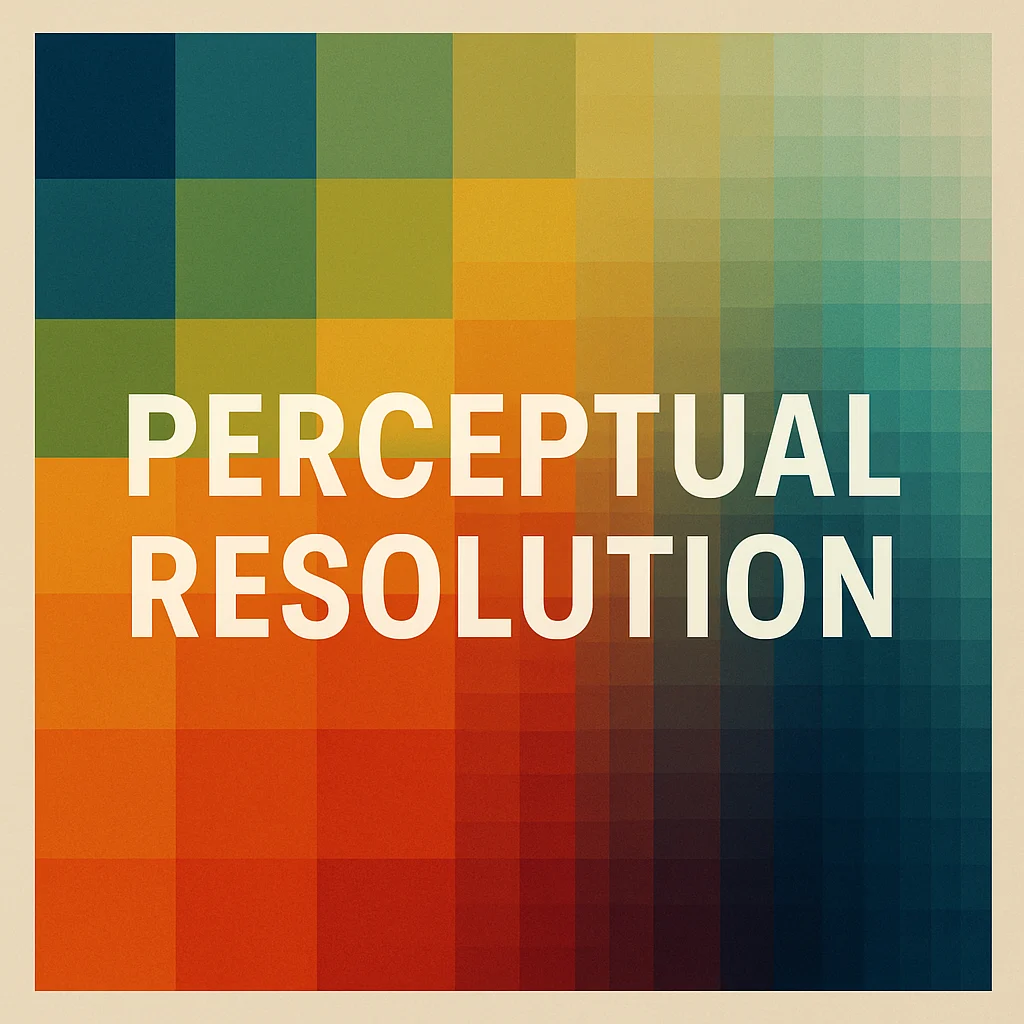Perceptual Resolution: The Hidden Variable of Human Sovereignty
Exploring the role of perceptual granularity in shaping autonomy, clarity, and resistance to manipulation in modern life.
This essay explores perceptual resolution—the degree of granularity with which a person detects, differentiates, and interprets stimuli. More than awareness or intelligence, it governs clarity of judgment and the precision of action. In a world flooded by binary narratives and reaction loops, high-resolution perception is not a luxury. It’s a requirement for sovereignty.
1. The Problem of Blur
Just like a low-resolution image flattens detail, low-resolution perception obscures nuance. It blurs feelings, events, and reactions into generalized emotional states. Modern digital and social systems amplify this blur by encouraging speed and simplification.
When perception is pixelated, emotion becomes mislabeled. The self becomes less knowable. And manipulation becomes easier.
If you can't name it, you can't resist it.
2. Definition and Distinction
Perceptual resolution isn’t intelligence or introspection—it’s the architecture that makes both possible. High perceptual resolution enables:
- Detection of micro-patterns in emotion
- Separation of overlapping internal states
- Root-cause tracing of reactions
- Discernment of layered motives
Cognitive lumping is the enemy. Clarity begins with separation.
3. The Political and Psychological Stakes
Low-resolution perception is not just a personal limitation. It's a political vulnerability. A population that can’t differentiate complex emotion or logic is easier to steer with blunt narratives and shame-based compliance.
Simplified input equals simplified output. That makes manipulation predictable—and resistance rare.
Sovereignty requires perceptual bandwidth.
4. The Mechanics of Clarity
Raising perceptual resolution isn’t about consuming more—it’s about refining what’s already sensed. Mechanisms include:
- Slowing reaction time
- Labeling layered emotional signals
- Tracing perception temporally
- Using metaphor as scaffolding for clarity
Insight isn’t louder—it’s more differentiated.
5. Toward a Culture of Precision
An education system tuned to perceptual resolution would prioritize refinement over information. Personal growth would center not on self-improvement—but on tool sharpening.
Such clarity disrupts prediction models. It produces humans who are harder to script.
Sovereignty isn't strength. It’s perceptual granularity.
Conclusion
Perceptual resolution separates reaction from understanding. In a world addicted to flat messaging, cultivating clarity is resistance. It can’t be bought or taught—it must be trained.
Once refined, it cannot be taken from you.
Share this article
Related Articles
Unveiling the Script: Intelligence Operations and Narrative Manufacture
How intelligence agencies shape public perception through strategic disclosure.
Why It Matters: The Stakes of Independent Thought
Understanding the importance of maintaining cognitive independence in an age of manufactured consensus.
